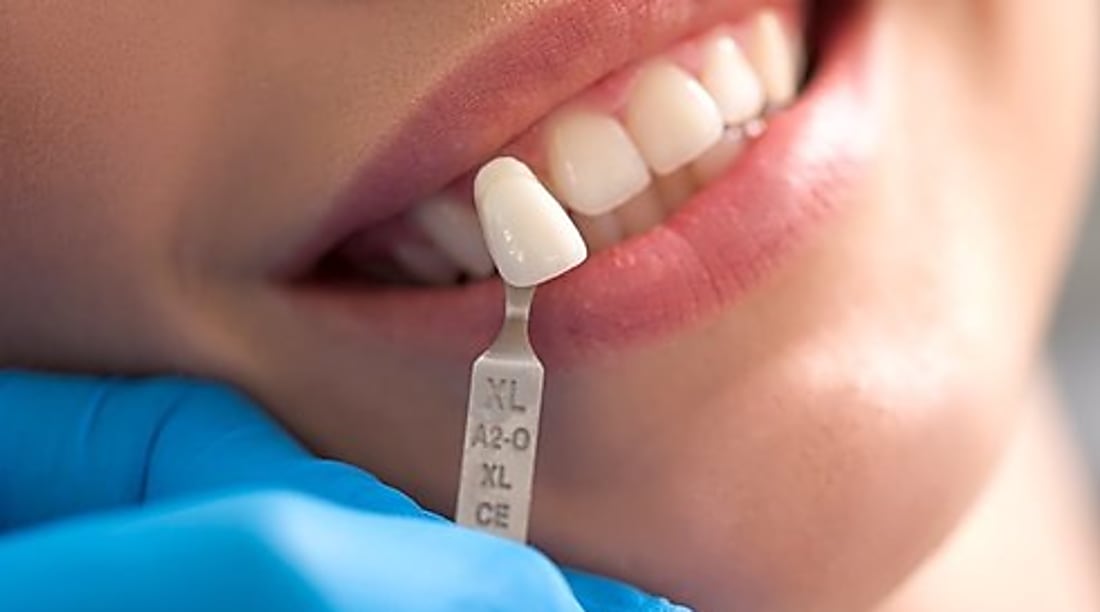When Whitening at Home Isn’t Enough
At-home whitening can help — but it often reaches only surface stains. Deeper discoloration can come from enamel wear, coffee buildup, or even old fillings. If whitening strips no longer make a difference, it may be time to understand what’s really behind the color changes and when a professional touch makes sense.

Teeth whitening has become a common practice for many seeking to enhance their smile. While drugstore whitening strips, toothpastes, and DIY treatments offer convenience and affordability, they have limitations. Even the most diligent home whitening routines may eventually hit a plateau, leaving persistent discoloration that refuses to budge despite continued treatment. When your trusted whitening kit no longer delivers the results you once enjoyed, it might be time to consider professional alternatives.
Signs Your Whitening Kit Isn’t Working Anymore
Recognizing when your home whitening products have reached their maximum effectiveness is important for avoiding wasted time and money. The most obvious indicator is diminished results—when teeth that once noticeably brightened after treatment now show minimal or no improvement. Another telltale sign is increased tooth sensitivity without corresponding whitening benefits, suggesting the product may be affecting your enamel without addressing deeper stains. Many people also notice uneven whitening, where some teeth remain stubbornly discolored while others brighten, creating an inconsistent appearance. If you’ve been using the same product consistently for months without seeing continued improvement, or if you’ve increased frequency of application without better results, your at-home solution has likely reached its limit.
Deeper Causes of Tooth Discoloration
Understanding why some discoloration resists home treatments requires looking beneath the surface—literally. Intrinsic stains develop within the tooth structure itself, often in the dentin layer beneath the enamel. These can result from certain medications (particularly tetracycline antibiotics taken during childhood), dental trauma that causes internal bleeding within the tooth, excessive fluoride exposure during tooth development, or simply the natural aging process as enamel thins and reveals more of the yellowish dentin underneath. Genetic factors also play a significant role, as some people naturally have thicker, more translucent enamel while others have thinner enamel that more readily shows the underlying dentin. Certain medical conditions and treatments, including chemotherapy and radiation to the head and neck, can also cause intrinsic discoloration that proves resistant to surface treatments. These deeper stains typically require professional intervention to address effectively.
Differences Between Surface and Deep Stains
The effectiveness of any whitening method largely depends on the type of discoloration affecting your teeth. Surface (extrinsic) stains accumulate on the outer enamel layer from common sources like coffee, tea, red wine, tobacco, and certain foods with strong pigments. These stains respond well to home whitening products, which use peroxide compounds to break down color molecules on the tooth surface. Deep (intrinsic) stains, however, reside within the tooth structure itself and cannot be reached by the relatively low-concentration whitening agents in over-the-counter products. Professional treatments use higher concentrations of whitening agents that can penetrate more effectively into the tooth. Additionally, some discoloration isn’t technically staining at all—tetracycline discoloration, fluorosis, and certain developmental issues create structural color changes rather than surface deposits. This distinction explains why some teeth appear resistant to whitening efforts despite diligent application of home products.
Professional Whitening Options and Their Benefits
When home whitening reaches its limits, dental professionals offer several advanced options. In-office whitening treatments typically use hydrogen peroxide concentrations of 25-40%—significantly stronger than the 3-10% found in home kits. This professional-grade treatment is often enhanced with specialized lights or lasers to accelerate the whitening process. A single in-office session can lighten teeth by several shades in just 60-90 minutes. For more stubborn cases, dentists may prescribe custom-fitted trays with professional-strength whitening gel for at-home use under supervision. This approach combines the convenience of home treatment with the effectiveness of professional products. For severe intrinsic staining, dentists might recommend veneers or bonding to cover discolored teeth entirely, providing a permanent solution when whitening alone proves insufficient. The primary advantages of professional treatments include faster results, more dramatic whitening for stubborn stains, and professional oversight to minimize sensitivity and ensure safety.
When to Consider Professional Intervention
Knowing when to transition from home whitening to professional care saves time and prevents frustration. Consider consulting a dentist if you’ve used home whitening consistently for several months without seeing continued improvement, or if you experience persistent tooth sensitivity during whitening attempts. Significant color variation between teeth that doesn’t respond to home treatment often indicates deeper issues requiring professional assessment. Those with known intrinsic staining from medications, dental trauma, or developmental issues should generally start with professional consultation rather than home remedies. Additionally, if you have dental restorations like crowns or fillings on visible teeth, professional guidance becomes essential since these materials don’t respond to whitening agents and may create noticeable color mismatches as natural teeth lighten. A dental professional can evaluate your specific situation and recommend the most appropriate treatment path based on the nature of your discoloration.
Comparing Home and Professional Whitening Treatments
Understanding the differences between home and professional options helps set realistic expectations for results and costs.
| Treatment Type | Average Cost | Effectiveness | Duration of Results | Time Investment |
|---|---|---|---|---|
| OTC Whitening Strips | $25-$100 | 1-3 shades lighter | 3-6 months | 30 min daily for 1-2 weeks |
| Custom Home Trays (Dentist-Provided) | $300-$600 | 3-6 shades lighter | 6-12 months | 1-2 hours daily for 1-2 weeks |
| In-Office Professional Whitening | $500-$1,000 | 5-8 shades lighter | 1-3 years | Single 60-90 minute session |
| Veneers | $925-$2,500 per tooth | Complete color change | 10-15 years | 2-3 office visits |
Prices, rates, or cost estimates mentioned in this article are based on the latest available information but may change over time. Independent research is advised before making financial decisions.
While home whitening products serve many people well, they have inherent limitations. Understanding the nature of your tooth discoloration helps determine when it’s time to seek professional assistance. Surface stains from food, drink, and lifestyle habits respond well to home treatments, but deeper discoloration often requires professional intervention. When your trusted whitening kit no longer delivers results, consulting with a dental professional can help identify the most effective approach for your specific situation. Whether through professional in-office treatments, supervised at-home options, or restorative procedures, dental professionals offer solutions that can address even the most stubborn discoloration cases, helping you achieve the brighter smile that home treatments couldn’t deliver.
This article is for informational purposes only and should not be considered medical advice. Please consult a qualified healthcare professional for personalized guidance and treatment.




